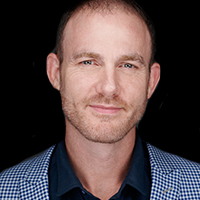Transforming Borrower Engagement Through Strategy, Process, And Automation
In today’s rapidly changing lending environment, it is critical to identify solutions that are working and producing actual results for other lenders. Pipelines are full; employees are working remotely, and communicating with your prospective borrowers is more critical than ever. That’s why I spoke with two lenders that are producing significant results to share their stories to assist you along your journey.
John Kresevic, CEO of JFQ Lending, and Nick Rutherford, Director of Business Development and Data Analytics for McGlone Mortgage Group, will share how they are using systems and technology to automate and transform borrower engagement while optimizing lead conversion.
So as we start, I think it would be good to highlight both lenders. Let’s start with Nick. What’s your monthly and yearly volume? What size lender are you?
Nick-Combined one point two billion closed, close to two billion written already over half a billion on the Consumer Direct side. So volumes are spiking up, which is why as the volume gets heavier, using technology in your business is going to become paramount.”
John -We opened in August 2017. We are all consumer direct. Last year we funded just over two billion. We’re planning for somewhere north of four and a half to five billion dollars in 2020.
Both of these companies are very successful; let’s discuss their cultures, what they do, and how they leverage technology to accomplish those results.
John, What does that culture mean to you, and what does it look like?
It’s a strategy and culture of continuous refinement. We do one thing. We do really well over and over and over again and then refine that process right from start to finish. So it starts on everybody’s first day, and then everything we do is to refine it over and over.
Nick. How does your culture permeate within your organization with retail and consumer direct? Because you have some competing needs sometimes.
Yeah, I think that we probably have the same end goal that John does, and we probably just go about it in a slightly different manner. When we bring on our technology, I like to find technology that fits with our current culture and then find ways to use it and highlight and accentuate our strengths. And I think a lot of our retail culture has seeped into our consumer-direct group. So it’s about how do you fit those pieces to accentuate what you do well.
I like the idea of accentuating what you do well.
So obviously most lenders have record pipelines, So some lenders are like, well, I’m making so much money, I don’t need to do anything else. Or more importantly, I don’t know how to do something because this is a very complex process. So how do you start this process now?
John, I’ve worked on with you guys on this. What was your first step?
John- Our first step. My partner and I went to Home Depot, and we bought two whiteboards, a hammer, and some nails, took them to my house. Our guest bedroom, now known as the idea room. These two large whiteboards that took up the entire wall and we started writing ideas down. From the ideas we called our long list, we write 30, 40, and 50 things down. We’d refine it. And once we refined it, then we go ahead and erase the entire thing. We realized the further that we got, the more concrete are plans became. We just took that process to start the company. But then when we started the company, we said, OK, how do we scale this? And for us to scale it, we always went back to the whiteboard. And so we took our entire call flow, and we wanted to say, OK, which lead goes to which loan officer? And then through Insellerate, this is where you guys came into play.
You guys flew out to Arizona and we whiteboard out the entire call process. Where that lead go? Did it become a submission? If it didn’t? How does it reroute over here? And then if it doesn’t get called within X amount of time, let’s circle back to this person. Because we spend a lot on marketing dollars and our loan officers have a buffet mentality where, you know, they work this lead a little bit, and it’s too difficult. They’re going to go with this one instead. So we’re going to recapture all that through the platform.
I do remember the whiteboard sessions. Nick, how did you guys visualize this?
Nick: I replaced the whiteboard with an Excel spreadsheet.
I’m a data guy. So, where I started was dig into the past and try to find trends. Try to find patterns. Then figure out where you want to improve. Maybe the number of calls your loan officer is making. Or the timing of those calls and having a transparent system to get useful, reliable data. Let’s get the data as tight as we possibly can to try to figure out how each loan officer or somebody struggles to make this call on time or make that call or struggle with a follow-up call when they’ve contacted someone. And then you can start training and refining.
On the consumer direct side, it would be a much different goal than on the retail side. So you’re trying to use a system that picked for consumer direct because you’re more engaged in CRM but also then find something that can do some things for your retail group as well, where instead of the power dialing, they can use some of the organizational functions, some of the marketing automation to give them the same lift in a different manner.
It sounds like you guys all did a lot of brainstorming on spreadsheets or whiteboards so you could visually see your business. What are you guys looking for when you did this? I could put it on the board, and there could be a million things you could improve. So what do you look for?
John: Our philosophy is what can be tracked can be measured. What can be measured can be improved. Right. So going back to what Nick was talking about, looking at past trends. First, as you know, lead to credit. How many phone calls for my loan officer to get to pull a credit report because I’m a huge believer, if you pull your credit reports, you’re going to write more loans. So we put all of our training for a loan officer’s first couple of months based on a lead to credit. Are you branding properly? Are you digging deep into goals? Are you talking about our A plus rating? The Better Business Bureau?
By measuring the funnel’s front end, we can extrapolate out what the backend is going to look like. Based on our lead type. Like FHA Streamline is going to pull through at X percentage. Conventional loans are going to pull off at Y percentage.
I think it’s critical for many lenders out there. They don’t have access to the data. So I think that’s a big problem to point out. Using a platform like Insellerate, you know, we’re able to give you all the data. Just so people understand, both your companies are tracking the consumer from the initial handrails, assume that person raises their hand, whether they call you or submit something online, whether they talk to you in person. Then you put them in that into the platform.
The minute you have a borrower, a customer, you’re tracking them and engaging with them. Most lenders can’t track each step of the borrower’s journey. The tracking allows you to continue to refine the process while providing you with business intelligence to scale your organizations.
Nick: Well, I think we look at basically the same metrics that John does. It’s really important not to just look at that end of the funnel. You can look at closed volume, and you can pat yourself on the back. But I think it’s important to understand the journey. How did you get there? What percentage are you converting? Because you’re probably not going to make a ton of difference on the back end. But you can look at and identify areas in the front end. We always say we probably don’t have any more home runs at the size that we’re at. We’re not going to turn on jobs. We’re not going to turn on a lead source and suddenly start doing 100 billion. Look for little things that you can stack on top of each other to make a really big difference. If marketing automation that gets you an open rate of an additional one percent or two percent, that’s going to funnel down to the back end. So look for constantly making those little tweaks and refinement. That’s going to help boost those kinds of the front of funnel numbers.
John: One of the most significant Eye-Opening moments for us early in our inception we realized like, oh, my gosh, we’re missing. We’re not even answering the phone thirty-five times a week; I’ve got five loan officers. So just finding that number through Insellerate of how many times each loan officer answers the phone was eye-opening. You can see Billy over here answers five calls a day, and Sally is at fifteen. If they’ve got the same close number, well, I’ve got to figure out, how do I get Sally to take fewer calls so she can convert better and how, Billy, can make more calls.
That was such a great point, John. And I think that that’s something that we preach organization-wide from scaled-down to operations. It’s the most important thing you can do. If you’re thinking about getting into technology or getting into data is understand what your baselines are, what you can track, and then what you can improve. That’s awesome.
Most lenders who have come through our platform, they’re were using something else, have said that they quickly saw higher responses from email. That was an easy thing that our platform is getting a lot more open rates because the way we send out the data and the way we manage it, that we’re getting way more inbox, way more open rates.
Nick- The email is a great example, and this is good for anybody who’s listening. Maybe you’re not deep into technology, you’re thinking about getting into it without doing anything. We use to send all of our emails out through our homestead funding account. We switched over to Insellerate and instantly got a three percent better deliverability rate right off the bat.
They’ve done some work on their side to make sure that emails aren’t getting blocked in three percent uplift instantly. My favorite thing when we first got Insellerate, was the organizational capacity. We have a gentleman from our Arizona branch who’s one of our highest producers, and he was opposed to trying something new. I don’t like this thing. This is a huge producer, so I’m trying to keep him happy. So I said I Jared, just do me a favor. Just try it. Josh has spent countless years building this system. We’ll set it up for you. Set it up for our organization. He agreed to give it a try. He stated now that he never misses an opportunity. You can only be as good as humans can be. Right. If you’re keeping things down on your calendar or notepad, you will miss some opportunities. With Insellerate, we’ve been able to customize exactly how we want those calls to be made and where our high impact calls will be made. It’s making a big difference in conversion numbers.
Lenders that are strategically mapping out their borrower touchpoints, leveraging technology to improve borrower engagement, and enhance reporting our reaping significant benefits and growing while gaining a competitive advantage in the marketplace. To hear this entire conversation with these dynamic lenders visit Transforming Borrower Engagement through Strategy, Process, and Automation Webinar, or to schedule, a demonstration of the Insellerate platform, visit https://upgrade.insellerate.com.

Josh Friend began his career as a loan officer and soon moved on to open six mortgage call centers. Over the past 21 years, he has grown to manage and train thousands of loan officers, processors, and marketing managers. That experience has helped him market to millions of consumers, with that experience he has dedicated himself to building software for the mortgage industry since 2004. With a keen eye for developing best-in-class sales processes, he leveraged automation & engagement software to build a better loan cycle. Combining the best from both a CRM and lead management system, Josh now enables lenders to achieve higher revenue goals with Insellerate’s award-winning CRM & Engagement Platform.



